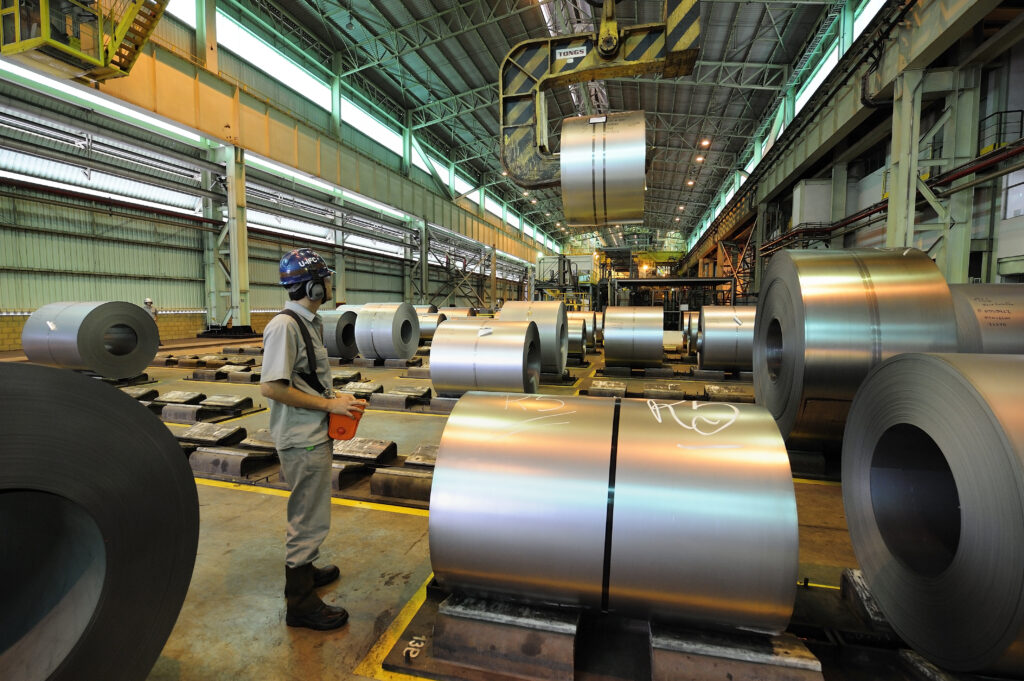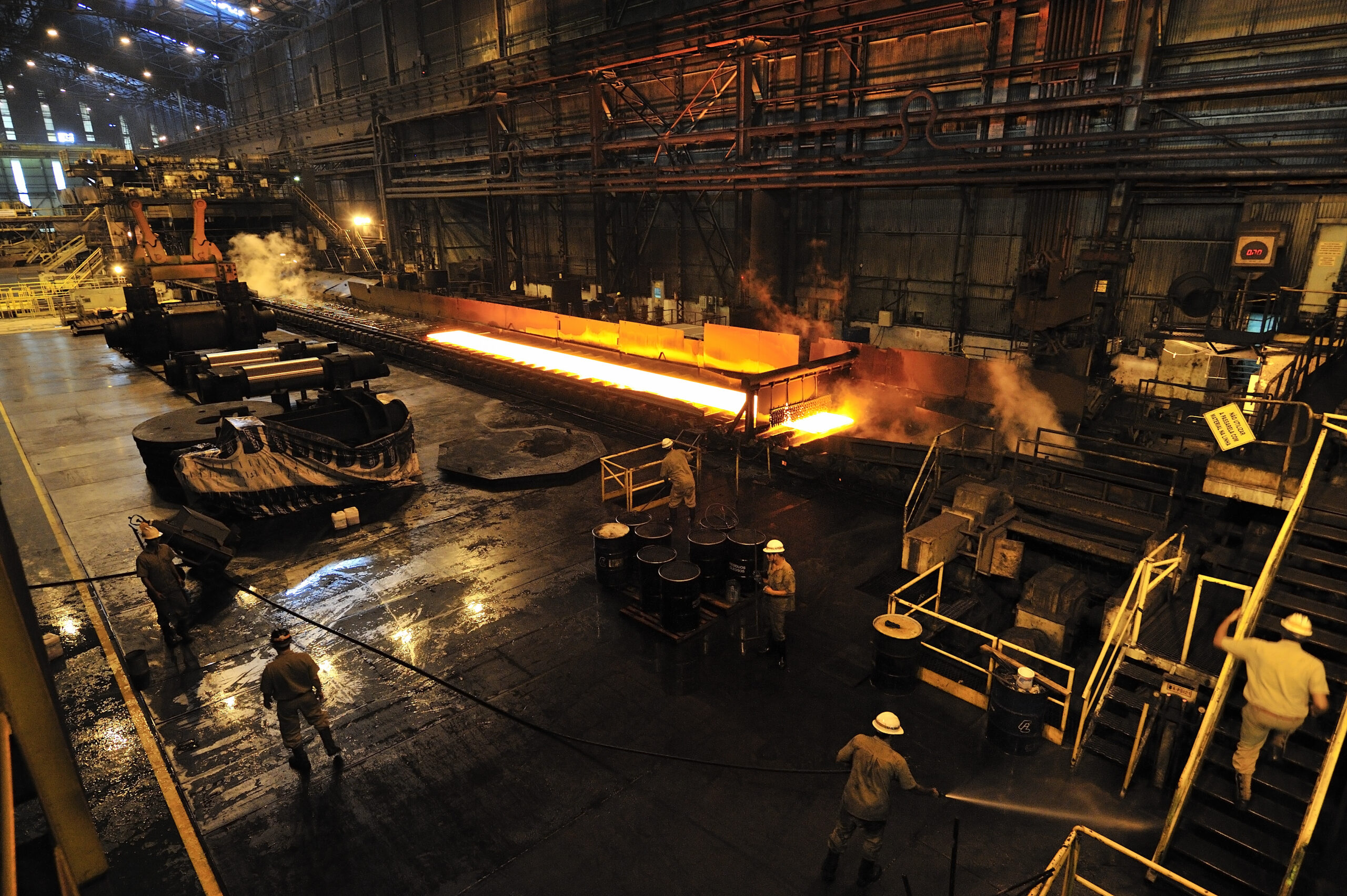

Considering their durability and cost, these types of materials for all practical purposes have no substitutes, according to Christiaan Gischler, Lead Energy Specialist at the Inter-American Development Bank (IDB).
“The Roman Colosseum is made of cement,” he noted, “and it has lasted over time because it’s cement.”
Output of cement, steel, and other industrial products will only increase in the coming years and decades, as countries continue to grow and develop, so it’s important to “decouple” production from the emissions typically associated with these sectors, Gischler said in an interview.
“Given that these are major emitters and are unique in the sense that they have no substitute, you have to find a viable and commercially reasonable mechanism to be able to reduce these emissions,” he said.
That is no easy task, especially since many types of industrial processes require high-temperature heat. Emissions from heavy industry are often described as “hard to abate.”

Cemex, based in Mexico, is one of the largest cement producers in the world. Its U.S. operations include this quarry in Doral, Florida.
The Sixth ECPA Ministerial Meeting, which will be held March 14-15 in Punta Cana, Dominican Republic, will include a side event organized by the IDB on “Decarbonizing Heavy Industry.” The session is scheduled to include the following speakers:
– Alejandro Wagner, Executive Director, Latin American Steel Association
– María José García, Executive Director, Inter-American Cement Federation
– Andrés Rebolledo, Executive Secretary, Latin American Energy Organization
– Mónica Gasca Rojas, Executive Director, Clean Hydrogen Colombia
Other related panel discussions will focus on sustainable transport and certification of clean hydrogen.
More information on the upcoming ministerial meeting is available here.
Gischler will moderate a panel discussion on “Decarbonizing Heavy Industry” at the Sixth Meeting of Energy Ministers of the Energy and Climate Partnership of the Americas (ECPA), which takes place in March in the Dominican Republic (see sidebar). He is also the lead author of an IDB technical note on the subject, published in December (available here in Spanish), which examines how to accelerate decarbonization in the region in four sectors: steel, aluminum, cement, and pulp and paper.
Heavy industry contributes around 29% of total global emissions and about 20% in Latin America and the Caribbean, according to Gischler. The reason for the lower regional figure, he said, is both because the region is less industrialized than some other parts of the world and because its electricity mix is greener, which lowers emissions for industrial processes that use large amounts of electricity.

Emissions from industrial processes that require high-temperature heat are particularly hard to abate.
How can heavy industry best reduce its emissions? In the recent interview, Gischler talked about four main pathways which together could eventually help industry bring its emissions down to net zero. The first is to improve energy efficiency, such as by using fewer materials and reducing waste in the industrial process.
A second strategy is to electrify as many parts of the process as possible, to replace fossil fuels with renewable energy sources. That will be more feasible in some sectors than others, Gischler said, adding that electricity may not always be the most efficient or cost-effective way to power a blast furnace, for example.
A third solution, which many countries in the region and around the world are pursuing, is to produce clean, low-emission hydrogen for industrial applications. One of the major barriers today is cost, Gischler said, though he noted that the cost of solar and wind energy used to be viewed as prohibitive but has dropped dramatically in the past 15 years.
“That is what we have to do with hydrogen, but we have a way to go to reach that point,” he said.
A fourth approach is carbon capture, utilization, and storage (CCUS), in which, for example, an industrial process could use hydrogen produced from natural gas as a feedstock, then capture the associated emissions and store them underground or under the sea. This is still an expensive and technically tricky proposition—and less attractive than transforming the industrial process itself, Gischler said.
Used in combination, he said, these four pathways have great potential. Although industries also have the option of purchasing carbon credits to offset their emissions, he said, it would be far preferable for them to minimize emissions in the first place.

Chile and Germany serve as co-chairs of the newly launched Climate Club, which focuses on decarbonizing industry. Credit: Bundesregierung/Steffen Kugler
Numerous initiatives are underway around the world to tackle the problem of emissions from heavy industry. One such effort is the Climate Club, which describes itself as a “high-level forum for cooperation” on climate action, with a focus on decarbonizing industry.
Launched in the United Arab Emirates, at the recent United Nations Climate Change Conference, COP28, the Climate Club currently has 37 members, according to its website. Chile and Germany are the co-chairs, and other members include Argentina, Canada, Colombia, Costa Rica, Peru, the United States, and Uruguay.
Meanwhile, a private sector initiative called the Mission Possible Partnership—spearheaded by CEOs from carbon-intensive industries—is developing transition strategies to reach net-zero emissions by 2050. It focuses on seven economic sectors: aluminum, cement and concrete, chemicals, steel, aviation, shipping, and trucking.
The Mission Possible Partnership will host the secretariat of the newly launched Industrial Transition Accelerator, described as an effort to “turbocharge” climate action in hard-to-abate sectors. Backed by $30 million in funding from Bloomberg Philanthropies and the COP28 Presidency, the accelerator will bring together industry leaders, financial institutions, policymakers, and technical experts, according to the announcement at COP28.
Other efforts designed to address emissions in heavy industry include the First Movers Coalition, ConcreteZero, SteelZero, and the Industrial Deep Decarbonization Initiative, to name just a few.
Much of the discussion about abating emissions in heavy industry tends to center on clean hydrogen. That includes green hydrogen, which is produced by using renewable energy to split water molecules into hydrogen and oxygen through electrolysis, and hydrogen produced from natural gas using CCUS technology to capture and store the CO2 emissions.
Clean hydrogen, in turn, can be chemically converted into derivatives such as methanol, ammonia, and synthetic fuels, which have many potential applications in industry and transport.

In Argentina, the steel company Ternium is building a wind farm with the capacity to generate 99 MW of electricity, which the company says will allow it to replace most of the electricity it now buys from the grid. Credit: Ternium
In a presentation last year, the Executive Director of Clean Hydrogen Colombia, Mónica Gasca Rojas, described the potential for clean hydrogen to reduce emissions in several key economic sectors.
“We can’t really live without concrete, without cement. We can’t live without steel, we can’t live without plastics, nor can we live without ammonia. And hydrogen and its derivatives offer possibilities for decarbonization across these four pillars,” she said.
The nature of hydrogen opens the door to interesting synergies in different industries, according to the IDB’s Christiaan Gischler. For example, he said, hydrogen can burn so hot in a furnace that solid waste could be incinerated with it to bring down the temperature to the desired level. In other words, green hydrogen could not only reduce direct industrial emissions but also provide solutions for dealing with urban landfills or industrial waste.
Many countries in the region have developed roadmaps and strategies for clean hydrogen—in many cases with support from the IDB—with the idea of not only helping to decarbonize their own industries but also tapping into the export potential.
Hydrogen itself is difficult to transport, but producing countries in Latin America and the Caribbean will be able to export hydrogen derivatives like ammonia or methanol to high-demand markets in Europe, as well as Japan and Korea, Gischler said. Although the United States is potentially a large consumer, the generous incentives provided to U.S. producers under the Inflation Reduction Act of 2022 mean that it will probably not need to import hydrogen for some time, he added.
In a report last year (Unlocking Green and Just Hydrogen in Latin America and the Caribbean), the IDB estimated, based on data from the International Energy Agency (IEA), that South American countries have the potential to supply 33% of the expected international trade of hydrogen by 2030.
European countries, especially, are banking on clean hydrogen to help decarbonize their industrial sectors, and they are expected to be the primary export target for hydrogen from Latin America. In fact, Gischler said, much of the incentive for countries to meet high standards for clean hydrogen is coming from the European Union.
The EU’s Carbon Border Adjustment Mechanism aims to encourage cleaner industrial production in non-EU countries by putting a price on the carbon emitted during the production of carbon-intensive goods entering the EU. In other words, Gischler said, anyone who wants to sell to European Countries has to meet stringent emissions standards.
“It’s that simple,” he said. Subsidiaries of international corporations are also facing pressure from their parent companies to reduce emissions, he added.
Late last year, the IDB and the Latin American Energy Organization (OLADE) announced the creation of a certification system for the clean hydrogen that will be produced in the region. Called CertHiLAC, it will provide standardized information on carbon intensity and other factors, in order to provide assurance to the export market.
Some governments in Latin America and the Caribbean have strengthened national regulations on emissions—Chile is a prime example—but for the most part the region is still not making this as much of a priority as Europe is, according to Gischler. One concern, he said, is that if the cost of industrial production rises too much, it will make the region less competitive and have negative effects on domestic economies.
Most efforts in the region so far seem to be focusing less on regulation than on economic incentives, Gischler said—especially on how to access concessional climate funding to help companies make the investments they need to reduce emissions.
Another important factor to consider is the social and environmental impacts of such investments on the communities where projects are built. This is important even with smaller projects, he said, and all the more so when the projects scale up from megawatts to gigawatts and from millions of dollars to billions.
That said, Gischler is optimistic about the region’s prospects. “Everything is more complicated, but that doesn’t mean it can’t be done. And the point is, we have no alternative.”
 View Map
View Map